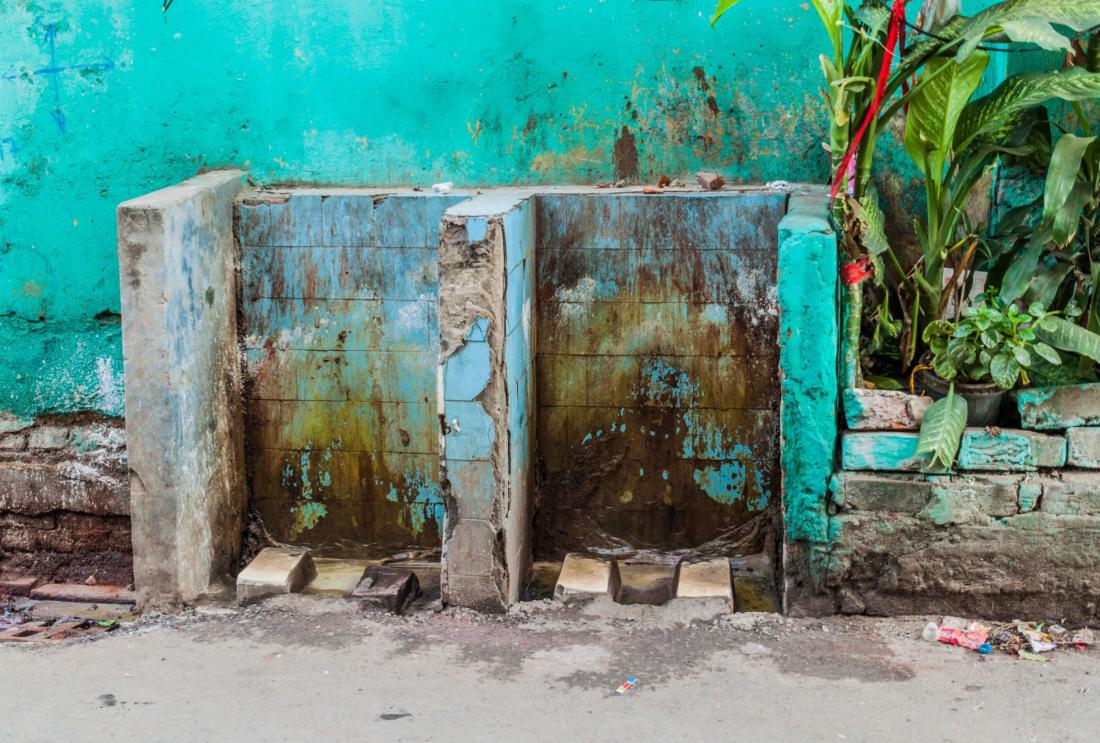The Effect of India's Total Sanitation Campaign on Defecation Behaviors and Child Health in Rural Madhya Pradesh, India
- Children under five
- Rural population
- Diarrhea
- Health outcomes
- Information
- Subsidies
- Water, sanitation, and hygeine
Open defecation is considered a major cause of the persistence of diarrhea and intestinal infections among children under the age of five worldwide. Researchers examined the impact of a rural sanitation program in India on defecation behaviors and child health outcomes. Results suggest that the program was marginally successful in increasing the availability of better sanitation facilities and changing defecation behavior, but had no effect on child health.
Policy issue
Open defecation is considered a major cause of the persistence of diarrhea and intestinal infections among children under the age of five worldwide. Reducing this practice requires access to and use of improved sanitation facilities that prevent human feces from entering the environment, but an estimated 47 percent of the world’s population did not have access to improved sanitation facilities in 2010. Observational studies in urban areas suggest that sewerage systems can reduce diarrheal diseases and parasite infections. However, in rural areas, where the provision of networked sewerage is prohibitively expensive, most financing in the sanitation sector focuses on the provision of non-networked toilets. However, despite the wide-scale deployment of such programs, no rigorous research has been conducted on the effect of rural sanitation programs on child health outcomes.
Context of the evaluation
India’s Total Sanitation Campaign (TSC) was launched in 1999 with the ambitious goal of eliminating open defecation in India by 2012. Scaled up to all districts in India, the program is one of the largest rural sanitation programs in the world. As one of the less developed and predominantly rural states in India, Madhya Pradesh suffers from particularly poor water and sanitation infrastructure. Only 13 percent of rural households have access to on-premise latrines and less than 10 percent have access to tap water. The World Bank provided capacity building support to ten districts in Madhya Pradesh to strengthen the implementation of the TSC.

Details of the intervention
Researchers conducted a randomized evaluation to measure the impact of the TSC on the availability of improved sanitation facilities, open defecation practices, and child health outcomes. In collaboration with state officials, researchers selected two of the ten districts in Madhya Pradesh that implemented the TSC with World Bank support. In each district, researchers identified 40 villages willing to participate in the randomization, 20 of which were then randomly enrolled in the TSC; the other 20 villages served as the comparison group. Within each village in the treatment group, researchers randomly selected 38 households with children under 24 months of age at the time of enrollment to participate in the TSC program. The TSC included activities designed to change social norms and behaviors, such as school sanitation and hygiene education, as well as technical and financial support for latrine building. In treatment villages, the program distributed subsidies for the construction of individual household latrines (IHL) and supported rural sanitary stores to provide materials for toilet construction. Additional subsidies were given to households below the poverty line to support IHL construction, and financial awards were given to villages deemed “open defecation free.” The World Bank provided capacity building support for local authorities and helped establish monitoring systems to assess progress; they also led community exercises to encourage behavior change.
Results and policy lessons
The TSC, when implemented with support from the World Bank, increased the availability of IHLs in households and reduced open defecation practices. The program had the greatest impact on households below the poverty line and those that did not have an IHL before the program. However, the increased availability of IHLs and reduced open defecation practices had no impact on child health outcomes. These results suggest that scaled up sanitation and hygiene programs in rural settings have difficulty delivering health benefits. The program increased the proportion of households in treatment villages with improved sanitation facilities meeting WHO standards to 41.4 percent—19 percentage points more than in comparison villages. Men and women in treatment villages were also 11-12 percent less likely than those in comparison villages to practice daily open defecation. However, more than 70 percent of men, women, and children in treatment villages continued to practice daily open defecation. Among the treatment households with improved sanitation facilities, 41 percent of households reported that adult men or women practiced daily open defecation. A follow-up survey identified the main reasons for daily open defecation in spite of having an IHL were culture, habit, or preference, followed by inadequate water availability. Despite the improvement in availability of improved sanitation facilities and the reduction in open defecation, the TSC had no significant effect on child health outcomes, measured in terms of caregiver-reported illnesses, intestinal infections, and cases of anemia. Anthropometric measures of growth also revealed no significant differences between children in the treatment and comparison villages.

